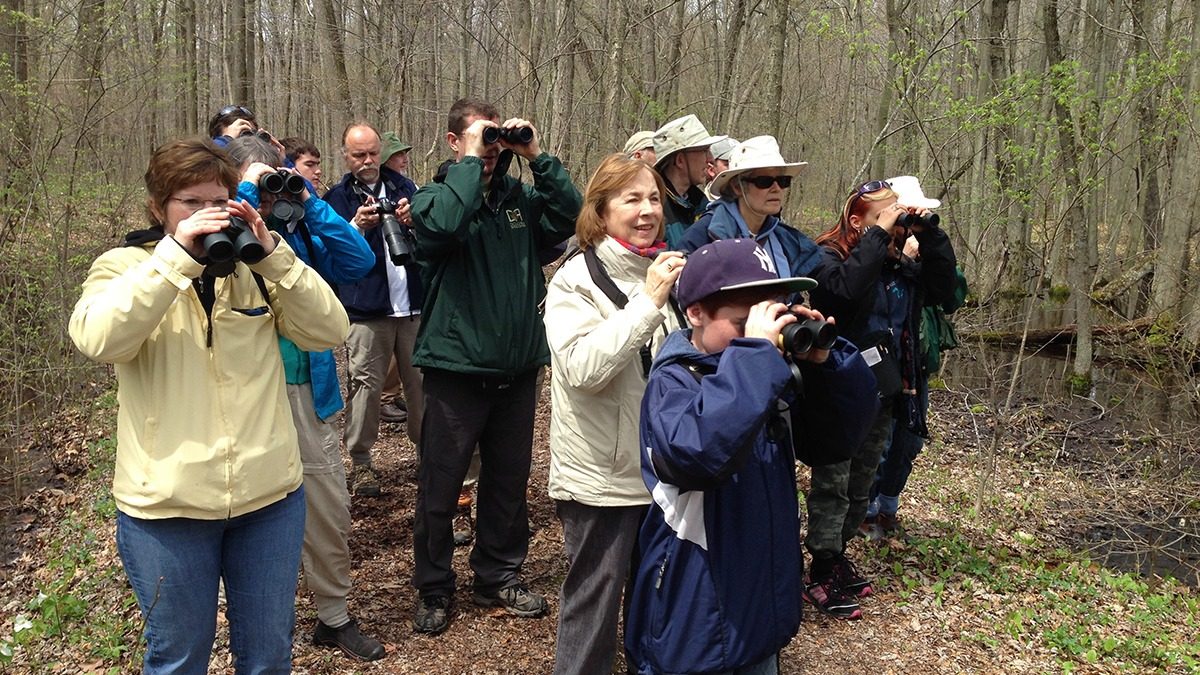Red-headed Woodpecker
Melanerpes erythrocephalus
COSEWIC status: Endangered
Estimated Canadian population (individuals): 6000
Appearance and population trend
Red-headed Woodpeckers, true to their name, have a full ruby-red head. They have black wings with white wing patches, a black back, and a white belly. Female and male Red-headed Woodpeckers are not sexual dimorphic, unlike other woodpecker species. From 1970 to 2014, the continental population has decreased by 67% (Rosenberg et al. 2016) while Canada has a 58.2% decline (COSEWIC 2018). Most of the decrease appears to be occurring in Ontario, which has seen a 79.8% decline across the province (COSEWIC 2018).
Location and habitat
These birds can be found in the provinces of Saskatchewan, Manitoba, Ontario, and Québec. In Ontario, Red-headed Woodpeckers are found throughout the southern half of the province with a large concentration along the shores of Lake Erie. They prefer to inhabit oak savannah habitat but can live in a broad range of forests (Reller 1972). Forest breeding habitat must have a high density of dead limbs or trees, an open canopy, and little understory vegetation. Red-headed Woodpeckers are often found near beaver ponds and meadows in Eastern Ontario (Derbyshire 2018). They will breed in public parks, cemeteries, and golf courses if the number of dead trees and snags are sufficient. Red-headed Woodpeckers are weak primary cavity nesters and rely on later-stage decayed trees to build nests. Dead trees are also important for caching food and perching.
Threats
Two primary threats to Red-headed Woodpeckers are habitat loss and decreasing abundance in prey. The removal of dead trees from residential developments, parks, and urban areas results in a lack of suitable nesting and food locations. Insects have been declining due to the heavy use of pesticides in agricultural and residential areas. The lack of food makes it harder for the woodpeckers to feed themselves and their young.
What Birds Canada is doing
Staff with the Ontario Forest Birds at Risk Program are looking to expand the program to include the Red-headed Woodpecker. Currently, it is not one of the program’s target species.
Interesting facts
Red-headed Woodpeckers cover their cached food with wood or bark.
They are also called a half-a-shirt, jellycoat, and the flying checkerboard.
Two-million-year-old fossils of Red-headed Woodpeckers have been found in Florida, Virginia, and Illinois.
References
COSEWIC. 2018. COSEWIC assessment and status report on the Red-headed Woodpecker Melanerpes erythrocephalus in Canada. Committee on the Status of Endangered Wildlife in Canada. Ottawa. xii + 60 pp. (http://www.registrelepsararegistry.gc.ca/default.asp?lang=en&n=24F7211B-1).
Derbyshire, D. 2018. Frontenac Bird Studies 2017 Field Season Report. Migration
Research Foundation, Ste-Anne-de-Bellevue, Québec. 28 pp.
Reller, A.W. 1972. Aspects of behavioral ecology of Red-headed and Red-bellied
Woodpeckers. American Midland Naturalist 88:270-290.
Rosenberg, K. V., J. A. Kennedy, R. Dettmers, R. P. Ford, D. Reynolds, J. D. Alexander, C. J. Beardmore, P. J. Blancher, R. E. Bogart, G. S. Butcher, A. F. Camfield, A. Couturier, D. W. Demarest, W. E. Easton, J. J. Giocomo, R. H. Keller, A. E. Mini, A. O. Panjabi, D. N. Pashley, T. D. Rich, J. M. Ruth, H. Stabins, J. Stanton, and T. Will (2016). Partners in Flight Landbird Conservation Plan: 2016 Revision for Canada and Continental United States. Partners in Flight Science Committee.
Species at Risk Profiles

Acadian Flycatcher
Endangered

Cerulean Warbler
Endangered

Louisiana Waterthrush
Threatened

Prothonotary Warbler
Endangered

